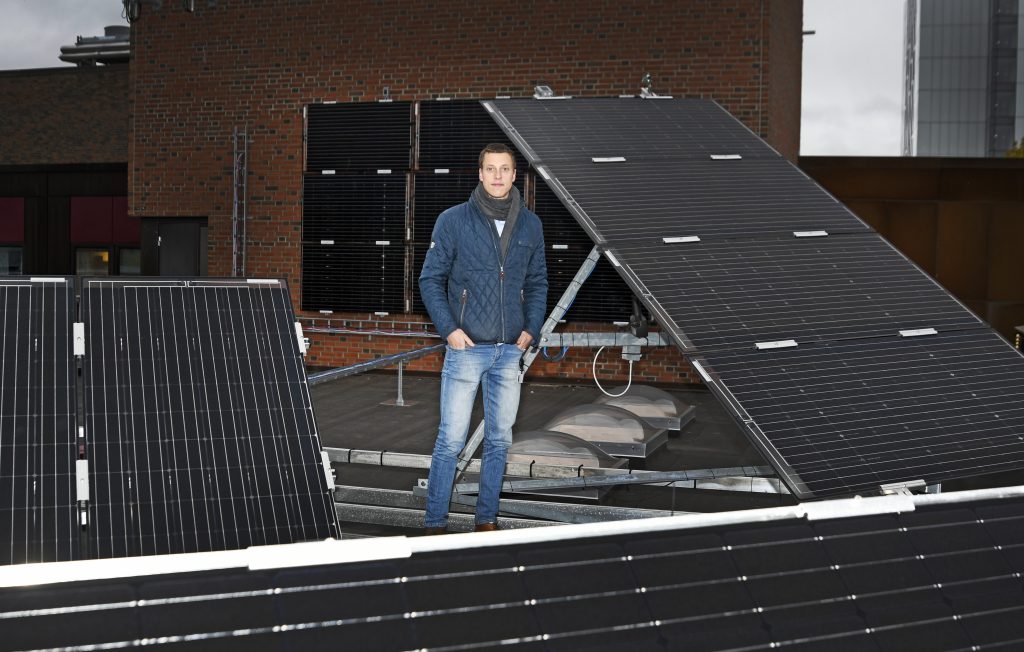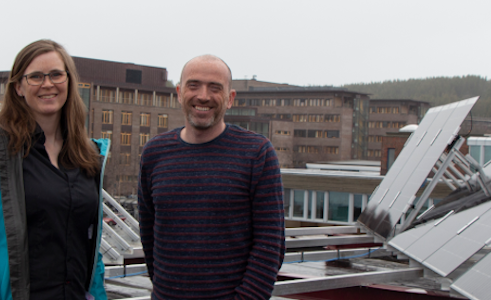The project Smart Senja is about utilizing state-of-the-art technologies to create innovative solutions for implementing renewable energy on a larger scale.
Renewable energy production is fundamentally different from conventional energy production, since the generation in some way has to relate to the variability of nature. For hydroelectric plants, it is seasonal variations. Sun and wind-driven devices are subject to the short-term fluctuations of current weather. Additionally, the consumption of energy varies continuously, with large differences between peaks and lows over a day. It is a great technological challenge to interconnect all the various small and large installations, each with their internal variations.
Technology is most easily applied with predictable patterns to follow. When there are many devices with different internal variations to take into consideration, the interconnection of technologies can be as big a challenge as the development of the technologies in themselves. At the moment, this is the biggest challenge in the development of working renewable energy systems across the world. There has been an enormous increase in renewable energy installations over the past decade, but the curve of development is about to flatten, due to the increasing difficulties of distributing the generated power. In Germany, as much as 90% of the power from a wind farm can be lost if there are powerful winds at the wrong periods of the day. In China, the average capacity factor of their solar parks is only 14%, largely due to grid limitations. Both countries have lowered their ambitions for future installations, since their power grids will have to be upgraded to handle the large and rapid variations in production. Smart Senja will innovate and contribute within this area over the coming years, when finding new solutions at Senja in addition to solving local energy demands.
Principally speaking, the need for new transmission lines on Senja is caused by the one hour of highest energy consumption during the day. It is still possible to deliver the general load spread over a full day; it is the peak hours that create problems. To illustrate how disproportionally large the transmission lines need to be in a conventional system, consider the fact that without the use of smart technologies, those lines have to be of a dimension suitable to cover the peak hour of the year, in order to guarantee uninterrupted supply. året når det ikke finnes muligheter for å være smart rundt forbruk og leveranse.

Foto: Rune Stoltz Bertinussen
If, on the other hand, the energy system is considered as a whole, new possibilities emerge. Advanced power management systems can solve these challenges in ways that are more suitable. For example if households need more power, local fisheries might be able to turn off freezer storages for a couple of hours and let the temperature increase a degree or two. And vice versa: If local industries need to process the catch of the day, the households can let their bathroom floors run a couple of degrees lower. In the nighttime, demand is generally lower, and electric cars, fishing boats and battery banks can be charged with the surplus production from wind turbines and hydroelectric plants. Hot water tanks can be turned on and off to regulate grid voltage. By continuously analysing patterns of consumption with artificial intelligence, it is possible to fine-tune these methods so that they are applied at times where they have as little impact as possible for everyday living. The consumer has full control over these power management systems from their smartphones, and can choose the degree of flexibility that is offered to the grid, in exchange for payment from the power company.
Many national and international partners are assisting with expertise, technology and services to realize this vision. People and local businesses at Senja are invaluable collaborators, offering flexibility and personal investment as they take part in building this prototype of an ‘energy system for the future’. The result will be a more even and predictable flow of energy, with less variation between peaks and lows. This makes it possible to downscale new upgrades significantly. The construction of new transmission cables can be postponed, as can the enlargement or rebuilding of transformer houses and other installations. All in all, major expenses for new infrastructure can be avoided, either in its entirety or spread out in time. As well as having a lower environmental impact, this approach will make a noticeable difference in both the grid connection fee and electricity bill - which is an important societal factor for promoting positive change on a larger scale
Last Updates
- Brødrene Karlsen åpner ny fabrikk på HusøySmart Senja har gjort mer strøm tilgjengelig på Nord-Senja. Dette gjør at Br. Karlsen nå kan ta imot …
- Hvordan har batteriene fungertBatteriene på Senja ble satt i drift i oktober 2022 og vi har nå fått testet de gjennom …
- Nye varmtvannstanker til Nord-SenjaDet var mange på Senja som ønsket seg en ny smart varmtvannstank. Ishavskraft fikk god respons fra både …
- Batteriene oppgraderesI starten av mai vil batteriene på Husøy og i Senjahopen byttes ut. På utsiden vil de nye …
- Fiskeri- og havminister Bjørnar Selnes Skjæran åpner batteriene på SenjaLørdag 20. august vil Fiskeri- og havminister Bjørnar Selnes Skjæran stå for den offisielle åpningen av batteriene på …

